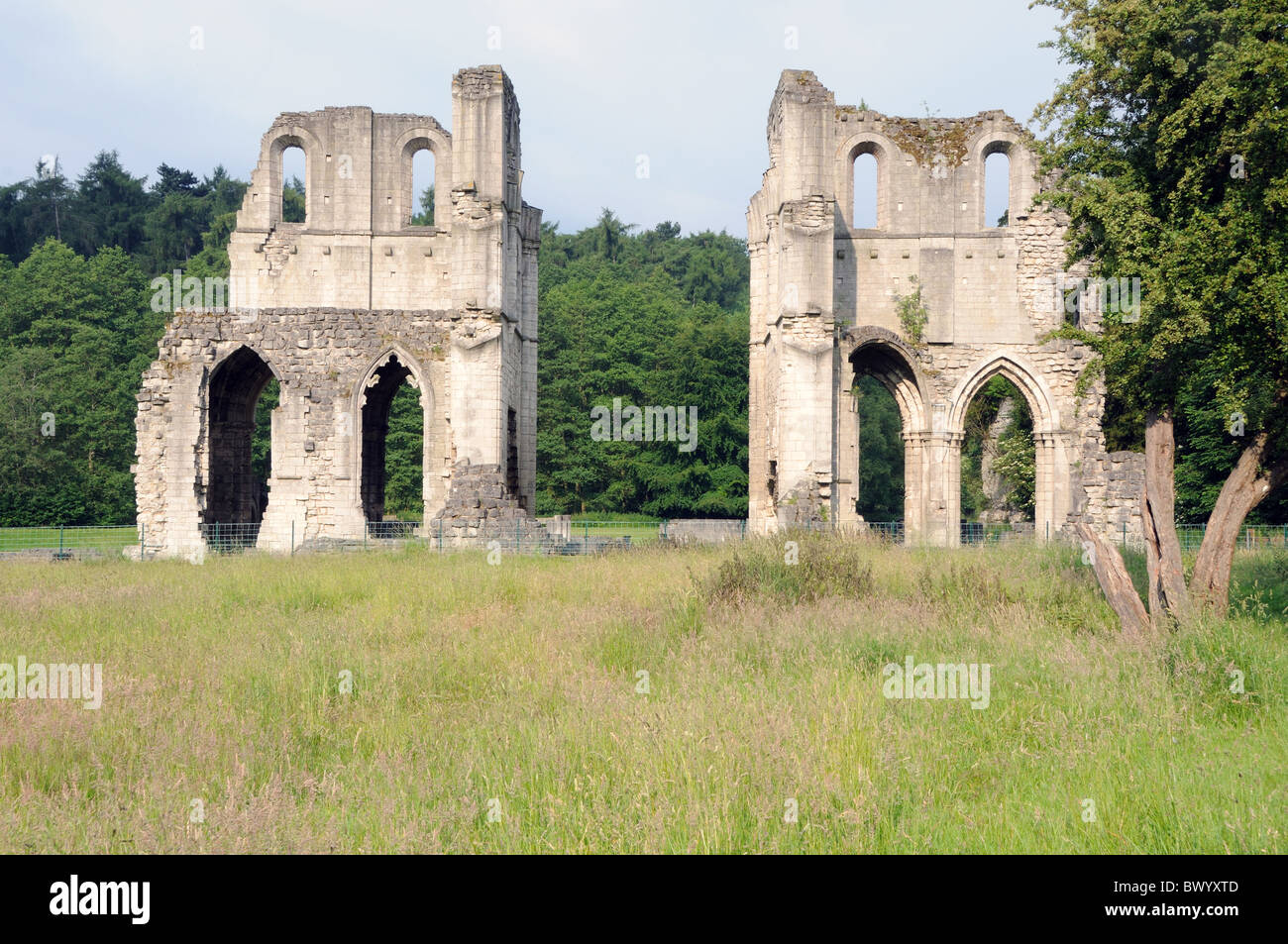The ruins of Roche Abbey, near Maltby, Yorkshire, England

Image details
Contributor:
David Knighton / Alamy Stock PhotoImage ID:
BWYXTDFile size:
34.9 MB (2.3 MB Compressed download)Releases:
Model - no | Property - noDo I need a release?Dimensions:
4287 x 2848 px | 36.3 x 24.1 cm | 14.3 x 9.5 inches | 300dpiDate taken:
26 June 2010Location:
Maltby, Yorkshire, EnglandMore information:
Roche Abbey was house of Cistercian monks, founded in 1147. It had two founders, Richard de Busli and Richard FitzTurgis, who owned the different sides of the Malby Beck, in whose valley it is situated and which the abbey straddled. Far less detail is known about the life of the abbey than its dissolution, which occurred 23rd June 1538, for there survives an account of what followed, written in 1591:- “...it would have made a heart of flint to have melted and wept to have seen the breaking up of the House, and their sorrowful departing, and the sudden spoil that fell the same day of their departure from the House...nothing was spared but the oxhouses and swinecoates, and such other house of office, that stood without the walls; which had more favour showed them than the very Church itself... and the tombs in the Church all broken (for in most abbeys were divers noble men and women, yea and in some Abbeys, Kings, whose tombs were regarded no more than the tombs of all other inferior persons: for to what end should they stand, when the Church over them was not spared for their cause), and all things of price either spoiled, carried away, or defaced to the uttermost...I demanded of my father, thirty years after the Suppression... whether he thought well of the Religious persons and of the Religion then used? And he told me, Yea: for, said he, I did see no cause to the contrary. Well, said I, then how came it to pass that you was so ready to destroy and spoil the, thing that you thought well of? What should I do? said he. Might I not as well as others have some profit of the spoil of the Abbey? For I did see all would away; and therefore I did as others did”. Further destruction was wrought in the 18th c., when Capability Brown landscaped the site in 1775 with a cavalier disregard for antiquity, but the main surviving parts of the church, the east sides of the north and south transepts, were retained as a romantic ruin. The site is now in the care of English Heritage.